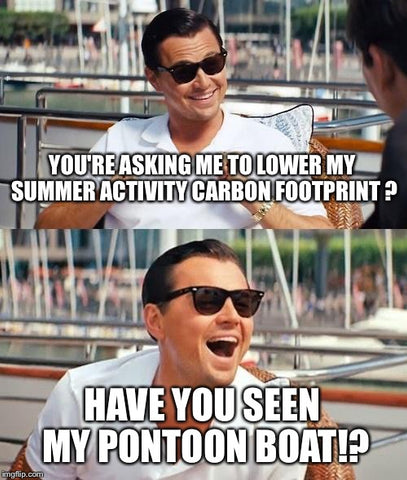News

For Centuries Pontoons Have Been Around | Pontoon-Depot
The pontoon experience stretches from ancient times to the modern age of powerboats and encompasses aspects such as utility, travel, and recreation. The modern pontoon boat is the product of centuries of experimentation and innovation.
Although they were not used as boats, ancient peoples used pontoons for various transportation needs. The ancient Greek poet Homer mentions the use of pontoons in his writings that date back to 800 BC and describes how the Greeks used them to create bridges for marching armies. King Wen of Zhou, the ancient ruler of the Chinese Zhou Dynasty, used a pontoon bridge in the 11 th century BC and the Chinese used pontoon bridges extensively in other military engagements. In 482 BC, the Persian King Xerxes needed to transport an army numbering 400,000 across the strait of Dardanelles and his engineers obliged by constructing a pontoon bridge over a mile long. Famously, Cyrus the Great used animal skin-covered pontoons in 536 BC to get his Persian forces to pivotal historical battles.
These ancient uses of pontoons set precedence for the military use of pontoons as temporary bridges. The U.S. Army has used pontoons for bridges starting as early as 1846 when U.S. engineers experimented with rubberized pontoons for flotation. The Union General F.P. Blair used a rubberized pontoon bridge in the Vicksburg Campaign of 1863. In 1941, the U.S. Army started using collapsible pontoons with rubber fabric and the U.S. Navy started using pontoons for ship-to-shore transportation. In fact, military leaders on every side of the conflicts in both World Wars used pontoon bridges to transport their forces.
The use of pontoons for bridges has found civilian applications as well. Permanent bridges have been built across America that use pontoons for flotation. Several pontoon bridges currently span the Mississippi River. Pontoon bridges are especially suited to locations where a river is narrow and it is difficult to sink a pier. Also, much like pontoon boats, pontoon bridges are often utilized in shallow waters.
Ancient Polynesians were the forerunners of the design of the pontoon boat. Through trial and error, this ancient people found that two logs tied together reduce the possibility of capsizing and discovered that hollowing out the logs greatly added to the buoyancy of the pontoon boat. These discoveries led to a phenomenal sailing culture and to this day, the Polynesians are regarded as some of the most accomplished mariners in history. Their multihull designs inspired many pontoon boat designs still popular today, such as the catamaran.
This excerpt was taken from a longer article on - http://www.restorepontoon.com/
- Scott Reynolds
- Tags: History Pontoon Boat History

Finding the Right Horsepower For Your Boat | Pontoon-Depot
What is horsepower & why should I care about it?
Horsepower, hp, is a measurement of energy. One unit of horsepower is the same as the amount of energy or power needed to lift 550 lbs. 1 ft. in 1 sec. Usually this is used in regard to engines or motors. In the situation of pontoon boats, it is a measurement on the engine that helps us easily say how powerful specific engines are. The engine on a small metal fishing boat may only be 10 hp to 20 hp while a high quality speedboat may have an engine with 500 hp. Theoretically, the higher the horsepower, the easier it is for your engine to push your boat.
Why is there a horsepower limit on a pontoon boat?
All boats are different, pontoons included. Because of this, each boat has a maximum horsepower limit that cannot be safely exceeded. If you go over the allowed limit, the coast guard or police can stop you from putting your boat in the lake. They DO check! But going over the limit in horsepower may not be necessary. Most boats have a more than generous range in what the horsepower can be handled safely. If you really want more horsepower that your boat says it can handle, than you may want to consider buying a boat that can handle such a heavy duty engine.
When all boats are first made, pontoons included, and are being full scale tested, they are used with a variety of different engines starting from low horsepower engines and then they increase the engine horsepower until they find the limit that the boat cannot handle safely. They also would test to see the boat’s performance with specific engines. Then with an accurate evaluation of each engine, they would decide what hp the boat performed the best at and what it performed the safest at. With those limits set, they choose a limit to rate the boat for.
Here are some examples of the maximum horsepower on specific pontoon boats, for a reference.
-
My 22′ G3 Suncatcher V22RF has a max engine horsepower of 115 hp.
-
A 25′ 6″ Bennington 2372 RCW Windscreen Sport Arch has a max engine of 300 hp.
-
The 2015 Sun Tracker Bass Buggy 16′ DLX maxes out at a recommended 40 hp.
-
A 28′ 5″ Bennington 2575 QCW IO Sport Tower has a max engine horsepower of 430 hp.
-
The 24′ 2014 Avalon A Series Catalina DRL has a max engine horsepower of 135 hp.
-
The 25′ 4″ 2015 Regency 220 DL3 has a max engine horsepower of 250 hp.
-
The 26′ 2” 2015 Sun Tracker Fishin’ Barge 24 DLX has a max engine horsepower of 150 hp.
-
A 20′ Sweetwater SW 2080 BF has a max engine horsepower of 90 hp.
-
A 25′ Windjammer Rear J Lounge has a max engine horsepower of 135 hp.
-
An Avalon 16′ Eagle Quad Fish has a max engine horsepower of 50 hp.
-
An Avalon 14′ Eagle Quad Fish has a max engine horsepower of 40 hp.
-
A 24’ Avalon LSZ Quad Lounger has a max engine horsepower of 125 hp.
-
A 26’ Avalon LSZ Quad Lounger has a max engine horsepower of 135 hp.
-
A 27′ Suntracker Regency 254 XP3 Pontoon Boat has a max engine horsepower of 300 hp.
-
A Lowe SS210 20′ Pontoon Boat has a max engine horsepower of 115 hp.
Find out more here at: http://pontoonguide.com
- Scott Reynolds
- Tags: Boating Engines Horsepower pontoon boat Pontoon Boat Operating

4 Common Mistakes Boaters Make | Pontoon-Depot
Mistake 1: Underestimating What It Takes to Operate a Boat
Both experienced and novice boaters can underestimate the level of knowledge, skill and experience required to operate a boat effectively and safely. From trailering and launching, to safe anchoring, to docking and undocking, the equipment, navigation, handling and rules of the road are completely different than on land. Serious accidents, including swamping and capsizing, often result from simple failures such as loading a boat properly and within capacity or anchoring safely. Studying the rules of the road, getting safe boating instruction, and ensuring you know and understand your boat are all key to avoiding accidents.
Mistake 2: Inattention
The beauty and fun of being on the water can make boating seem carefree and effortless. A brief lapse in attention is often behind groundings, collisions and capsizing. Many accidents occur late in the day, when operators are fatigued. Many involve collisions with markers, jetties and other obstacles that are visible and avoidable. The water may seem calm and familiar, but operator attention and diligence are vital.
Mistake 3: Boating Under the Influence
Fun, relaxation and friendship go hand in hand with boating. While no amount of alcohol is safe for a boat operator, the sun and fun that make boating so enjoyable can also make alcohol more dangerous for passengers. Dehydration, physical exertion and fatigue can accelerate and amplify the effects of alcohol, more quickly impairing judgment and coordination, which increases the chances of risky behavior and injury, and the danger of falling overboard. Intoxicated individuals on board pose an increased risk of injury to themselves and others.
Mistake 4: Failing to Recognize Risks
Bad weather, unfamiliar locales and hazardous waters are risks that boaters sometimes fail to account for. Responsible boaters learn to respect the weather and to check conditions prelaunch and while on the water to avoid sudden storms. While exploring new areas is part of the fun, it’s smart to check with local boating authorities if you’re heading out on an unfamiliar body of water. They can point out known hazards and offer navigation tips.
Mistake 5: Underpreparing for Emergencies
Filing a float plan and ensuring that proper emergency and communication equipment are present and working are essential safety precautions. But preparation only begins there. Passengers, as well as the operator, need to know basic emergency procedures, how to communicate and how to use emergency equipment if the operator becomes incapacitated. Practicing with equipment is particularly important, as every moment is precious in an emergency. It’s smart to have all aboard know and practice the basics of safe rescue techniques for a person in the water (PIW) (or “man overboard”). Finally, ensure that everyone aboard wears a life jacket at all times. If something goes wrong or there is a fall overboard, there is often no time and no way to access a life jacket.
The Coast Guard provides a wide range of safety information and resources through its Boating Safety Resource Center. For more information, visit uscgboating.org.
- Scott Reynolds
- Tags: Boating Safety pontoon boat Pontoon Boat Operating




